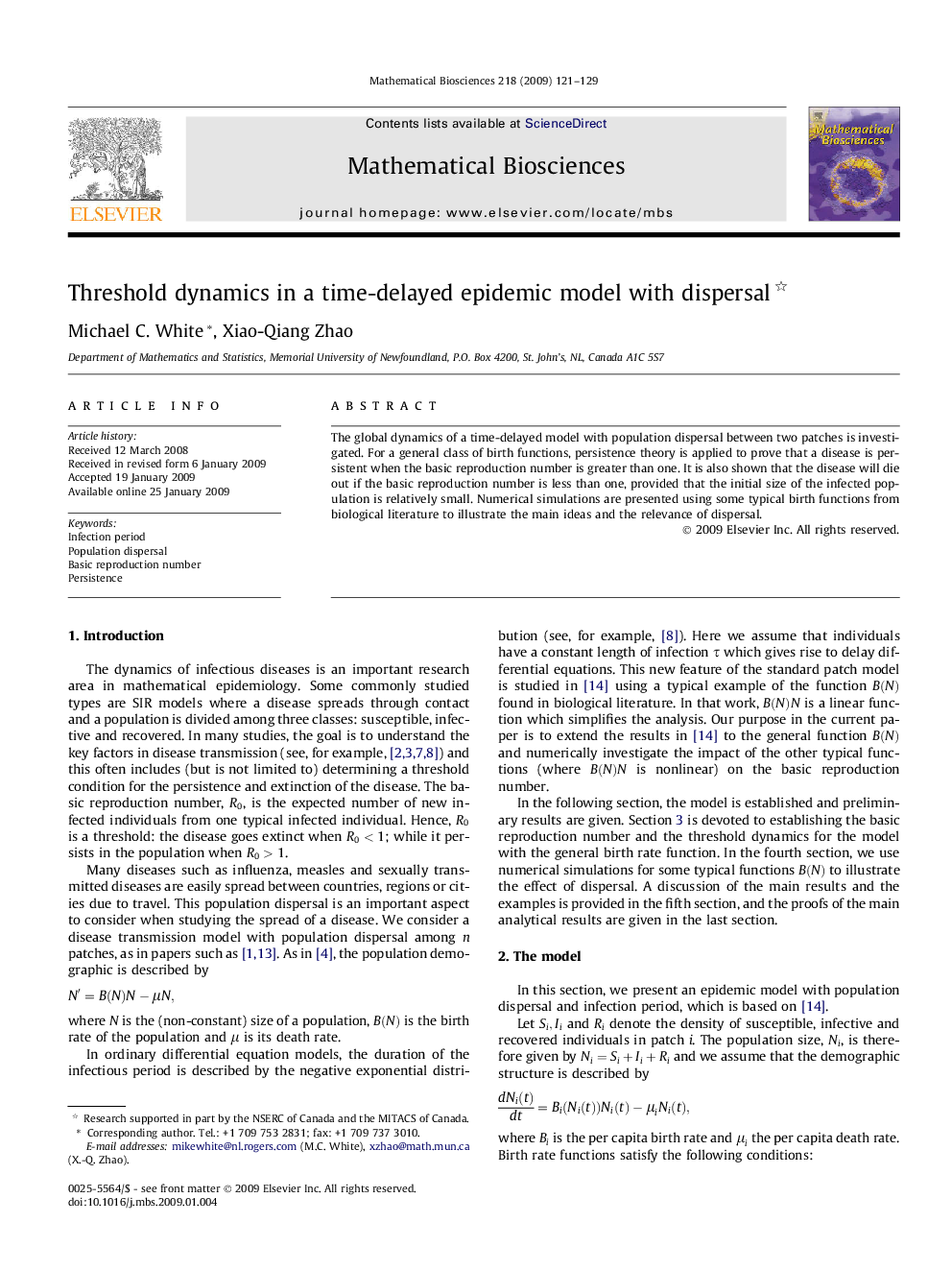| Article ID | Journal | Published Year | Pages | File Type |
|---|---|---|---|---|
| 4500792 | Mathematical Biosciences | 2009 | 9 Pages |
Abstract
The global dynamics of a time-delayed model with population dispersal between two patches is investigated. For a general class of birth functions, persistence theory is applied to prove that a disease is persistent when the basic reproduction number is greater than one. It is also shown that the disease will die out if the basic reproduction number is less than one, provided that the initial size of the infected population is relatively small. Numerical simulations are presented using some typical birth functions from biological literature to illustrate the main ideas and the relevance of dispersal.
Related Topics
Life Sciences
Agricultural and Biological Sciences
Agricultural and Biological Sciences (General)
Authors
Michael C. White, Xiao-Qiang Zhao,
